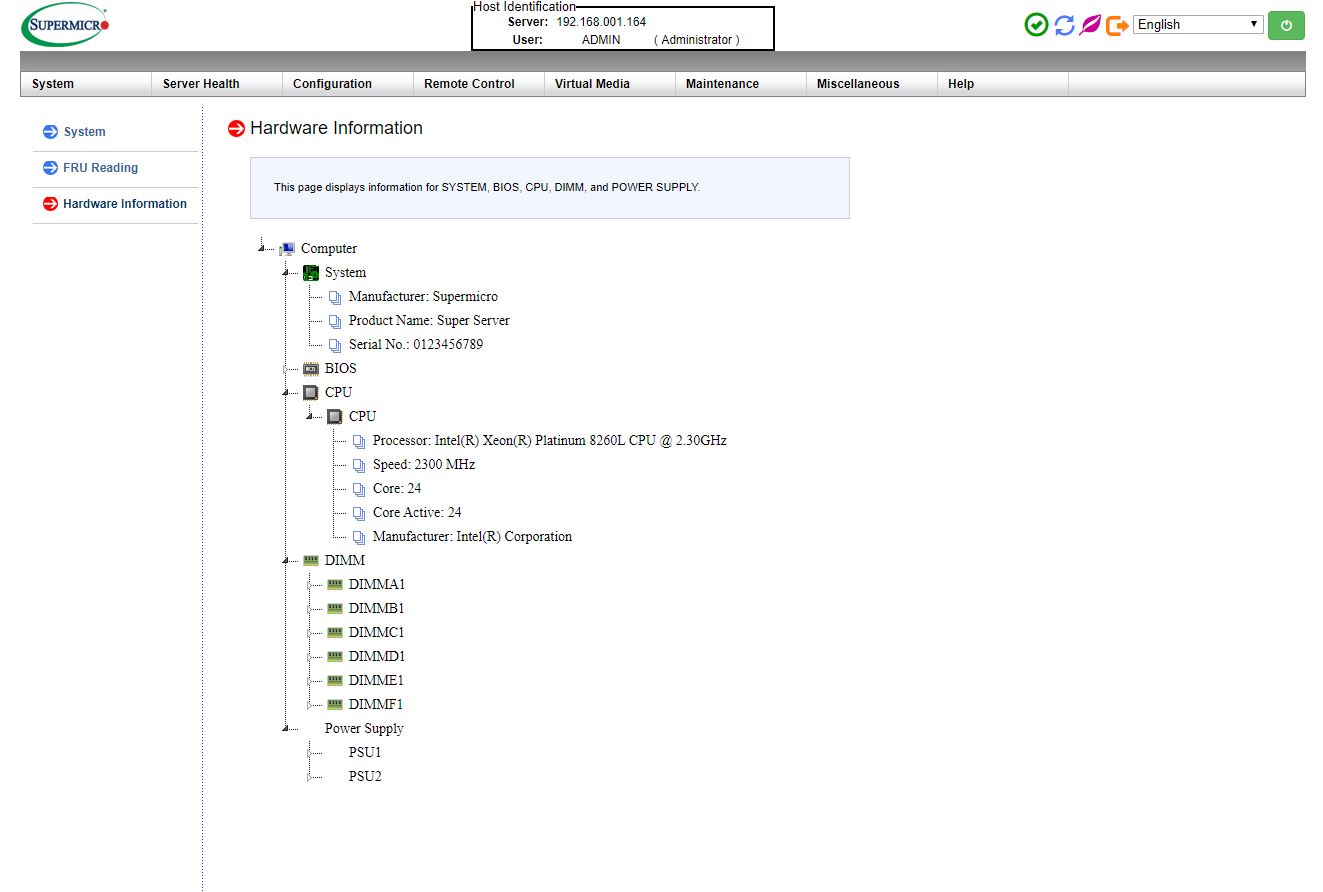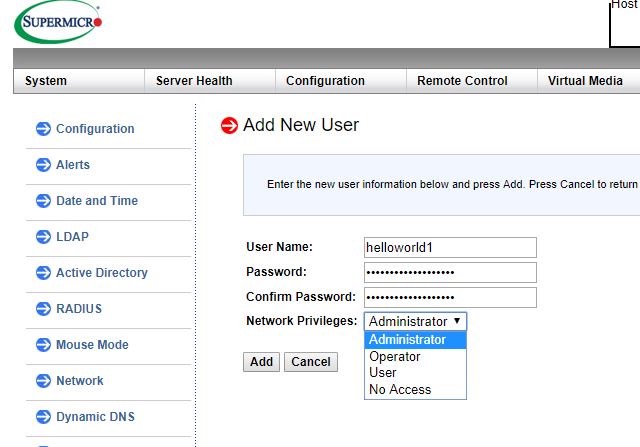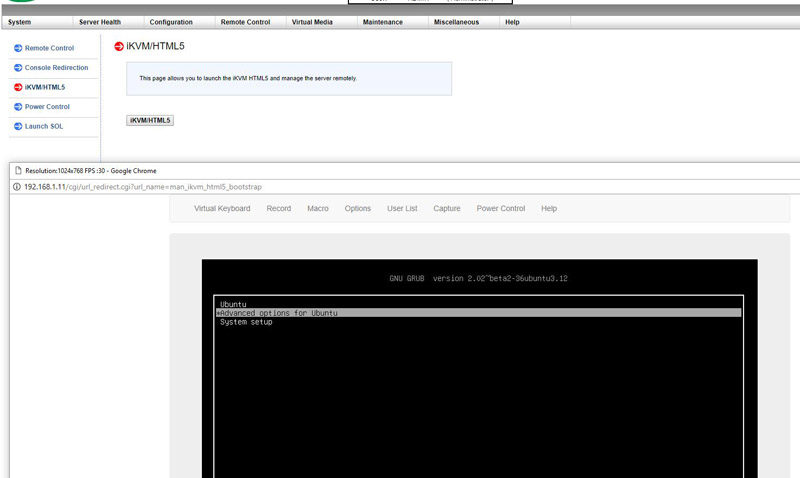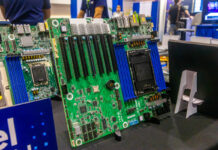Supermicro X11SPM-TPF Management
These days, out of band management is a standard feature on servers. Supermicro offers an industry-standard solution for traditional management, including a WebGUI. This is based on the ASPEED AST2500 solution, a leader in the BMC field. The company is also supporting the Redfish management standard.

On this server, we see similar features as we would across the Supermicro X11/H12 ranges. That means whether you are using an embedded Intel motherboard or a 4U EPYC storage server, you will have a similar look and feel to the management experience.

In the latest generation of Supermicro IPMI is an HTML5 iKVM. One no longer needs to use a Java console to get remote KVM access to their server.

Currently, Supermicro allows users to utilize Serial-over-LAN, Java or HTML5 consoles from before a system is turned on, all the way into the OS. Other vendors such as HPE, Dell EMC, and Lenovo charge an additional license upgrade for this capability (among others with their higher license levels.) That is an extremely popular feature. One can also perform BIOS updates using the Web GUI but that feature does require a relatively low-cost license (around $20 street price.) That is a feature we wish Supermicro would include with their systems across product lines.
This pricing differential for a serviceable iKVM functionality is a big deal in this segment. Adding a $200 license to a server can add 10% or more in the embedded platform costs. Supermicro’s iKVM feature is extremely popular due to its inclusion with the server.
Supermicro X11SPM-TPF Test Configuration
Here is the test configuration we used for the Supermicro X11SPM-TPF:
- System: Supermicro X11SPM-TPF
- CPUs: Intel Xeon gold 6240, Gold 6230, Gold 5218, Silver 4214, Silver 4210, Silver 4208, Bronze 3204
- Memory: 6x Micron DDR4-2933 32GB RDIMMs (256GB total)
- Boot SSD: Toshiba 512GB XG3
- Storage HDDs: 4x 10TB Western Digital Red
Overall, we see these servers being deployed as compact server nodes. This can be as an edge virtualization platform or even as edge storage nodes. The networking and storage capabilities afforded to the system by the Intel C622 PCH mean that this has a very unique value proposition as a storage platform. We see this platform primarily being paired with Xeon Silver 4200 to the lower-end of the Xeon Gold 6200 series CPUs.
Next, we will look at performance.




I wonder what percentage of STH reviews get a 9.3 rating. I bet it’s high.
– Ryan
I think STH reviews are pre-informed choices that Patrick knows fit a niche in the first place. Hence, the 9+ reviews ar emany.
In this case if you need a mATX intel cpu mainboard…Tyan? Gigabyte? Asus? Asrack? I think we’d only consider Supermicro or maybe Gigabyte in a server deployments built in house. If an Asus or Asrack were reviewed it might be more interesting but I don’t know it would change my mind.
It’s my impression these reviews are done because STH is running a lab for their own internal deployments and just publishing the results as a sort of side-project-blog. It probably makes them some money for ads and gets them noticed for what they can do, but I don’t think the reviews themselves are the primary “product” of the STH site.
Just some thoughts.
First, Matt I think you are right. If you think about it, there are three primary filters. Servers are so competitive and relatively standardized that a 5/10 or 7/10 product will never come to market. Our team does curate a bit in terms of what we want to review. We do not waste time on silly products. Vendors do not want us to review products that are poorly designed. On the consumer side, there is more market diversity. On the server-side, anything below an 8/10 cannot be sold. Most companies would not want to have the bottom half of their portfolio reviewed as well.
On the lab for internal deployments bit. It actually takes a ton of time/ money/ effort to get these reviews done. For example, with this motherboard, we need multiple CPUs, 6x 32GB DDR4-2933 sticks, SSDs, a chassis, PDU, power meters, network switches and gear, and more. We have a fairly good system for getting reviews done, but it is far from a side project. For some context, we are the largest site that is dedicated to independent data center hardware reviews at this point. By page views, it is not even close. I actually see reviews as central to what we do. Good topic for my Q4 Letter from the Editor.
Ryan – we provide a ton of free data/ views to our readers that is basically unavailable otherwise. If you want more detail, it is there. We are not doing the write 500 words, use all stock photos, and give products an award model. I think the natural selection process probably biases the ratings higher as you gather. Given the three logical filters to us doing a review, it is what you would expect, right?
I have it in config with 4108, 196mb ram , 2 lsi host bus adapters and 16 hdds + m2 ssd for the os. Software raid array .With teamed Ethernets , it saturates 10gbe. File’s filler.
My build, works already 11 months without headache .
on 2nd page:
“Storage HDDs: 4x 10TB Western Digital Red”
is it enough storage? ;P
Patrick, I did not mean my comment to be insulting. I really appreciate what you’ve built here. I am a data scientist, heading up the engineering team at a new R&D center for a multinational consultancy and STH is the only computer hardware site aimed at people like me (I am not a gamer). I look at STH every day. The thing is, when you spend all day thinking about data, metrics, scores, etc, you can’t really turn that off. I noticed what seemed to be a gaussian distribution of scores around 9.3 with low variance at STH and thought I would mention it here because, to me, understanding what scores mean involves looking at how they are distributed. I also thought it was kind of funny. To be honest the scores are not the important part of your work for me, it’s all the technical detail and context about the marketplace. STH is wonderful, thank you for it.
Hi, did you measure the power consumption in watts with a 12 Volt dc adapter under vmware esx 6.7, thanks, stefan?
Hi, I am on the evaluation for my new Home Server, and this practically motherboard will my prefered one. Now, I saw on the supermicro website, that the version -TF and -TPF has the chipset C622 instead of the C621 from the lower spec -F version. That is realated to the compatibility from the OS side. So why I can not put Windows 10 pro on the two 10G LAN versions?
@patrick Thankyou for the great work that STH is doing. I don’t buy any hardware without searching STH first.
I also regularly check in on STH for tech trends & updates.
I almost purchased this Supermicro motherboard MBD-X11SPM-TF (& later the X11SPH-nCTF) the until I saw the ASROCK EPC621D6U-2T.
Asrock seems to have understood the need to reduce the sata cabling from the motherboard to the HDD backplane without the need for hardware RAID.
Will you be reviewing the ASROCK EPC621D6U-2T anytime soon?
Hi Tony. ASRR is a small outfit so getting things done such as reviews is very difficult as there are often no test units available.